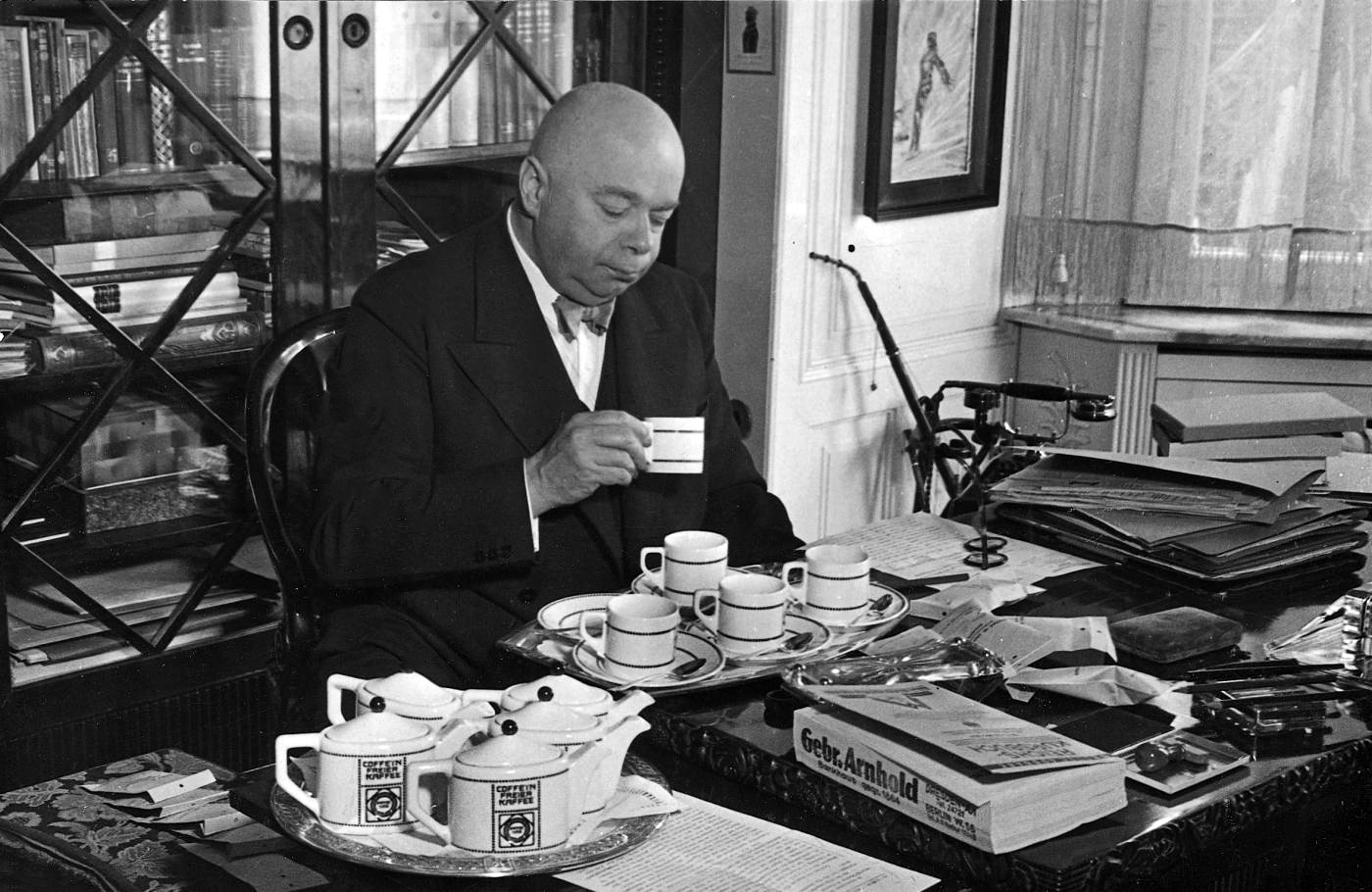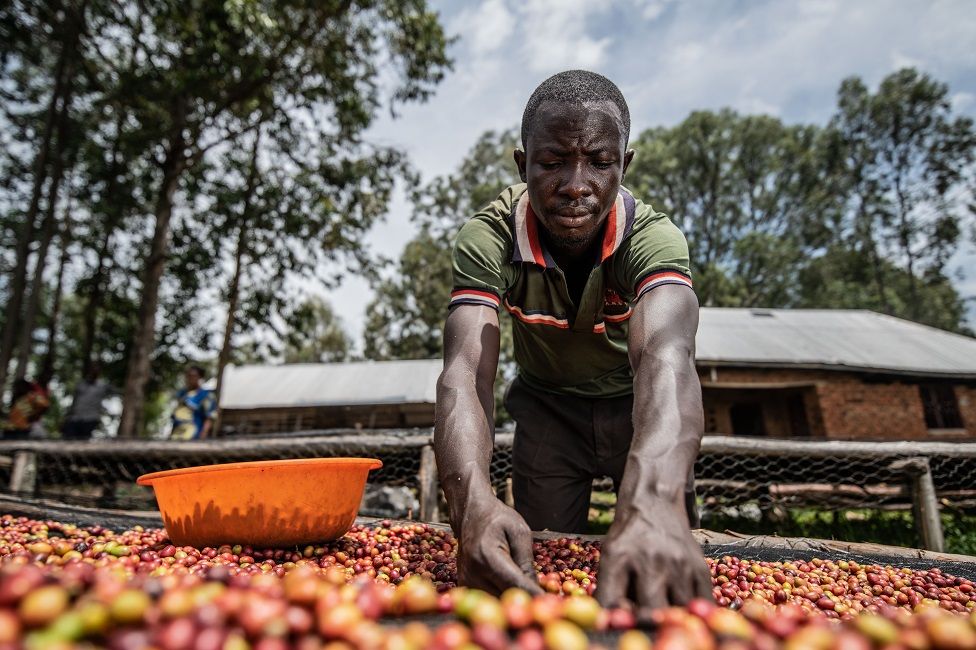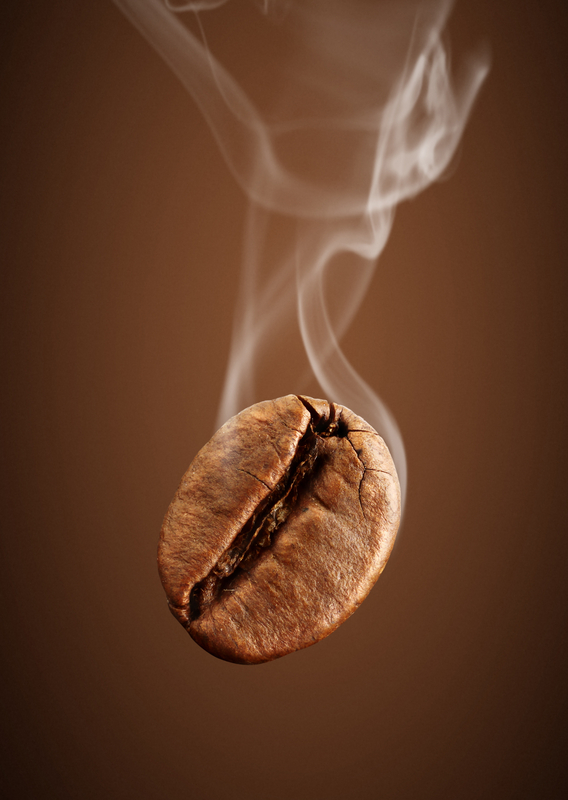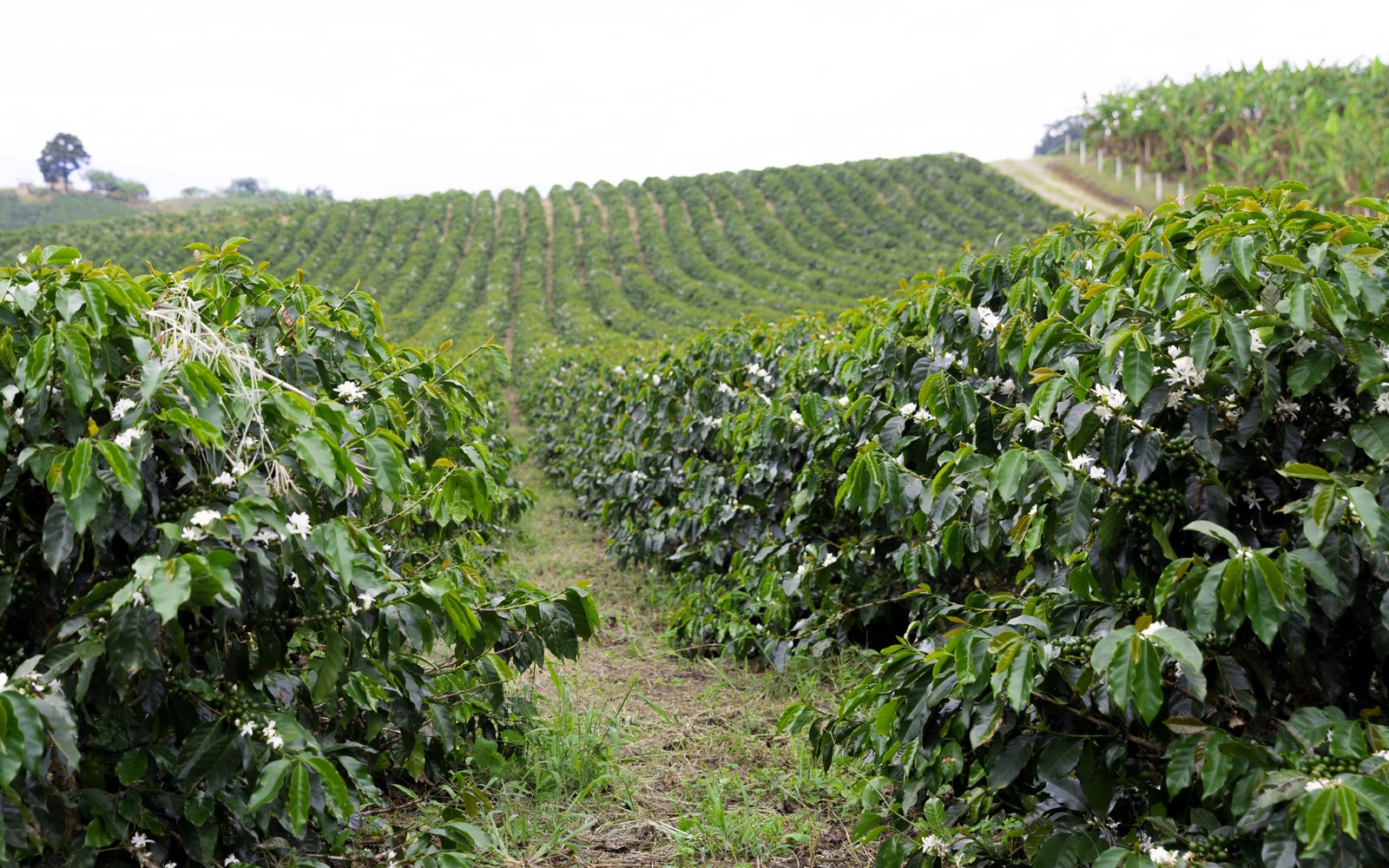How does the crema layer affect the quality of espresso coffee?
VCA - A cup of espresso with a smooth comparative crema will make you feel better
Although the taste of espresso coffee is the main motivator for consumers to love coffee, the texture and sensory properties in the mouth play a major role in the overall consumer assessment.
Crema in espresso coffee
A large proportion of coffee consumed today is usually in the form of espresso. When comparing espresso coffee with coffee made by other techniques, one of its main characteristics is the dense brown foam, also known as crema, which covers liquid coffee (Illy and Viani, 2005), coffee experts use crema to assess the quality of the extract. For example, crema indicates whether all parameters affecting the extraction process, such as de-gasing, crushing, compression and water pressure, are moderate when extracting a cup of coffee.
Many coffee drinkers prefer the presence of a beautiful crema layer, but it's also part of their consumption habits. Some will chop it off, some will mix it up, and some will turn the cup around to mix the cream in the last slice of coffee. At the same time, the beautiful image of the crema layer is used to create expectations of a delicious, smooth and tasty espresso coffee. Although the dark brown color of the crema or “tiger skin” layer and the smooth bubble size are indications of a good extraction process, they are only side-signs of the extraction and tasting experience, after the taste of coffee. At the same time, the crema class has been associated with increasing the “body” of espresso coffee (Navarini et al, 2004a). Studies also suggest that coffee foam can help distinguish robusta from Arabica coffee in an espresso cup (Maeztu et al, 2001a,b).
So, "What is the impact of color, bubble size, and the amount of cream on the coffee experience?" Which cream is optimal or are the cream properties part of the overall coffee sensory profile?
The chemical perspective of the crema class
We need to make a distinction between crema formation and crema stabilization. During the crema formation process, the energy needed to create air in the dispersed liquid. With espresso, add this energy by pumping pressure water onto the coffee surface. The new crema preparation is typical of an espresso. In addition, the conditions that apply when making espresso coffee affect the phenomena associated with surface tension such as foam formation and stability. For example, both the presence of carbonate in water and gas in coffee have been the main cause of the formation of the crema layer. Physical and chemical research is now too scarce to fully understand this complex system. The most comprehensive and recent evaluation has highlighted the current weaknesses in the molecular understanding of cream formation and stabilization (Illy and Navarini, 2011).
The role of crema in consumer experience has only recently been studied, with an emphasis on how crema affects visual aspects, as well as smell and taste.
Besides ground coffee, the second most important ingredient in espresso coffee is water, which accounts for > 95% of the ingredients in the coffee cup (Petracco, 2001), and the calcium and magnesium ions in the water have been found to reduce foam stability. This mechanism can be explained by the change in ion content, respectively by the interaction between cations and the protein/polysaccharide complex, leading to the instability of the foam-making mechanism (Damodaran, 2005)
The cream layer of espresso coffee is highly appreciated by consumers for its sensory properties, especially its appearance before drinking. Once in the mouth, it contributes to the smoothness of the drinking experience. Crema is said to act as a ‘cover’ to seal the fragrance (Petracco, 2005; Maeztu et al., 2001).
The formation and stability of crema
Foam is a complex and challenging phenomenon that includes (1) bubble formation, (2) bubble rising, (3) drainage, and (4) adhesive and disproportionate bonding. (Bamforth, 2004). In essence, foam is the crude dispersion of gas foam in a continuous liquid phase. With espresso coffee, the gas phase consists mainly of the CO2 generated during the coffee roasting process, part of which is retained in the cellular structure. This continuous compound is an in-water oil emulsion of ultra-small oil drops (<10 mm) in a water solution containing some coffee ingredients (e.g. sugar, acid, protein) as well as fragments of small solid coffee cell walls (2-5 mm) (Illy and Viani, 2005).
The amount of foam in an espresso coffee is equivalent to the amount of carbon dioxide per gram of roasted and ground coffee. Photo: Navarini et al. (2006)
The cream layer of espresso coffee can be classified as super durable foam with a specific shelf life (Dickinson, 1992). In most cases, it takes up to 40 minutes for the crema to disappear (Dalla Rosa et al, 1986). As the crema layer ages, its properties develop from the smooth liquid foam in the fresh espresso to the multi-faceted foam that dries as it ages. Ideally, the cream should account for at least 10% of the volume of an espresso (Illy and Viani, 2005) with a foam density of 0.30-0.50 g/mL (Navarini et al, 2006). The authors pointed to a linear relationship between CO2 content, weight, and foam volume.
There have been some attempts to describe how crema is formed in espresso coffee. When the water is pressed through the coffee under pressure, it emulsions the coffee oil into the extracted liquid. In addition, roasted coffee emits more CO2 over some time (degassing), and the longer coffee is exposed to environmental pressure, the more CO2. Although CO2 is often suggested to be the gas phase responsible for the creation of espresso foam, coffee experts have not yet studied in detail the mechanism of the foam formation. On the other hand, the relationship between CO2 chemistry and foam formation has been studied. Research shows that the state of bicarbonate-carbonic acid balance plays a role in the dynamics of the transitional phase of espresso coffee extraction (Fond, 1995).
The initial moisture phase of the espresso process is when hot water spreads into the gaps in the coffee beans, while the gas between the beans and inside the beans is pushed out of the coffee layer (Petracco and Liverani, 1993). This mass transfer between the coffee grains and the water occurs simultaneously, with the bicarbonate ions in the extracted liquid (water), along with the shift in its state of equilibrium as the pH changes in the coffee-making process (from 7.0-7.5 to 5.5-5.0) create a chemical reaction that occurs at high temperatures on the coffee stream. Coffee is compressed by the pressure of the water, the intensity of the coffee bean and through CO2 dehydration, which creates foam and emulsion to create the highly valued cream espresso.
Another study has suggested that the CO2 supersaturation conditions in coffee may be the driving force for the formation of espresso foam (Navarini et al, 2006). More specifically, the dissolving of CO2 (present in coffee) in water at high pressures and temperatures can cause supersaturation conditions in final coffee. To explain this further, the concentration of CO2 in the water may be lower than the solubility of the CO2 during extraction at high pressure and at a water temperature of 100ºC. However, it can also be above solubility at 1 bar and 70ºC. These conditions are compatible with foaming that occurs through the formation of heterogeneous bubbles and bubbles that emerge after the phase transition (from high pressure to surrounding pressure) when high-pressure water escapes the coffee layer and enters the cup. This effect, known as foaming, can be observed immediately after making an espresso (Illy and Navarini, 2011).
After the foam is developed, foam instability usually occurs through three phenomena. (Prins, 1988). First, there's a fusion between bubbles, which happens when the membrane separates the bubbles and collapses. Second, there's the 'Ostwald ripening process', which happens when the foam is scattered into multiple sizes. During this phase, the pressure difference inside bubbles of different sizes will diffuse smaller bubbles into larger bubbles. Third, gravity forces the liquid to separate from the gas foam. This, in turn, then the membrane, leading to fusion and 'Ostwald maturity'.
Although these phenomena are observed in any foaming system, the high temperature of the crema and how it cools will add another complexity to understanding the physical phenomenon during the formation and stabilization of the cream espresso. A previous study has suggested that the relatively high temperature of a beverage can negatively affect the stability of the foam. The premise is that the water evaporates and causes the foam to crumble down due to a decrease in the thickness between the foams (Navarini et al, 2006).
Another study has shown that lipid content can also affect the stability of foam. In a regular espresso cup (25 mL), the total lipid intake is between 45-146 mg for arabica, and between 14-119 mg for robusta (Petracco, 1989; Maetzu et al, 2001). On average, pure Arabica espresso has a higher total lipid content than robusta espresso, and therefore the likelihood of lipid-induced foam instability is higher for Arabica. Because espresso coffee is known to contain emulsifying fats, foam instability caused by fat can also occur through the spread of oil at the surface of contact between air and beverage (Schokker et al, 2002). This corresponds to the lower surface tension commonly seen in espresso arabica compared to espresso robusta (Petracco, 2001).
Substances related to cream stability
So far, no detailed research has been published on the chemical compounds responsible for forming and stabilizing the cream layer of espresso coffee. Nunes et al. (1997) found that the ability to produce foam increases linearly with the level of roasting. The stability of foam in espresso coffee is associated with polysaccharide levels of galactomannan and arabinogalactan. Other dependent variables observed are total solid, pH, lipid, protein and carbohydrate content. A close correlation has been found between the stability of foam and compounds with high molecular weight, which is believed to include complexes between polysaccharides, proteins and phenolic compounds caused by the roasting process (Nunes and Coimbra, 1998).
The effect of crema on the senses
Many studies exist about how external factors affect consumer perception or experience of a given product. For example, the information consumers obtain before they consume a product affects their expectations and ultimately how they evaluate the quality of that product (Siegrist and Cousin, 2009; Lange et al, 2002). Consumer expertise can also affect quality assessments (Saenz-Navajas et al, 2013).
In addition, with a beverage, the material of a cup or glass that consumers use has a big impact on how they experience and rate that drink (Schifferstein, 2009; Wan et al, 2015). Studies also show how food packaging design can affect different aspects of the food experience (Schifferstein et al, 2013). For all of these reasons, it is no surprise that the crema layer has an impact on the overall espresso-tasting experience.
The effect of crema on vision
The researchers also found that the quality of the product's perception when they can see and taste it is normally higher than in the taste blindness of the mouth. This indicates that visual signals have had a positive impact on the oral experience (Labbe et al, 2016).
Average smoothness for espresso coffee with increased amount of crema in three assessed conditions. Photo: Labbe et al. (2006)
Overall, research shows that crema is an important component of the espresso experience. The absence of the cream layer leads to low expectations of quality, overall flavor, bitterness and smoothness, thereby reducing the quality of senses and sensory properties.
The effect of crema on the release of fragrances
The term fragrance refers to the perception of volatile substances through the odor system. Vaporizable organic compounds can reach the olfactory epithelium in the upper part of the nose (Blank et al, 1991; Pollien et al, 1997).
The researchers used the Nespresso coffee maker system to test the role of the thickness and stability of the cream layer in the aroma radiation on top of the cup. Although it is commonly assumed that the crema layer acts as a lid that prevents fragrances from coming out (Petracco, 2005), instead, studies point to a much more complex mechanism. Within the first 2.5 minutes after starting the extract, the presence of crema usually produces significantly higher volatile concentrations in cups than those found in liquid coffee without cream.
The configuration releases the volatile substances of espresso with a crema layer and no crema (average measured 3 times). Photo: Petracco (2005)
The rupture of the thin membrane layer located on the foam surface causes the foams to break out and release the retained gas, which contains mostly volatile fragrances. Vaporizing membrane thinning is considered to be the main cause of this bubble rupture phenomenon (Dold et al, 2011; Weaire and Hutzler, 1999). In addition, when the liquid evaporates, the less volatile fragrances also evaporate from the liquid into the air. On the contrary, in the absence of crema, all the release of fragrances (high and low volatile) is entirely driven by the evaporation from the liquid to the gas phase.
When the stability of the crema layer is low, coffee releases the greatest amount of aroma into the vacuum. At the same time, the amount of crema correlates with the low release of volatile substances, most likely because the crema acts as a “cover,” preventing the scent from escaping (Parenti et al, 2014)
Crema and fragrance releases are often the focus when developing new espresso coffee systems. For example, Caffe` Firenze is based on compressed air, producing espresso with a more durable foam layer (Masella et al, 2015). This foam is believed to reduce the volatility of the aromatic molecules above the separator. This confirms previous findings that the stability of the crema layer plays a major role in the release of fragrances (Dold et al, 2011).
The effect of crema on mouth sensation
There is little research on the sensation in the mouth of coffee that focuses on the crema class (Charles et al, 2015; Barron et al, 2012; Labbe et al, 2016). Researchers often use a method called temporary domination of senses (TDS). This method allows for tracking the development over time of sensory cognition during product tasting (Pineau et al, 2009; Le Reverend et al, 2008, Pineau et al, 2012; Pineaux et Schlich, 2015).
The study by Barron et al. (2012) focused on the consumption of thick, roasted espresso in which the amount of crema was modified. TDS is done on seven swallows, allowing you to drink the whole cup. For each swallow, participants had to choose the dominant attribute of sensation in the mouth from a list of 11 attributes: carbon, roast, cereal, fruit, sweet, bitter, acidic, liquid, dense, hot and smooth. They found that the prevalence of the grinding level increases as the amount of crema increases. On the contrary, low or no cream intake causes carbon overflow as well as bitterness.
The same study confirmed these results using nasal spatial analysis, a method of studying the release of fragrance in the living body by spectral mass measurement to analyze the air that is breathed out during consumption (Barron et al., 2012). Research has shown that the overall intensity is higher with a greater amount of crema. Thus, combining TDS and nasal space data, we can conclude that the smell retained in the crema layer can also be perceived by sensory perception and measured in the nasal space during consumption.
Conclusion
The assumption that a good crema must have a dark brown color and a certain thickness may not be wrong, but it may not have demonstrated the full potential of what the crema can bring to the coffee experience. Although the taste of espresso coffee is the main motivator for users to prefer it, the texture and sensory properties in the mouth play a major role in the overall consumer assessment. In addition to the external form and structure of espresso, crema has also been shown to enhance the fragrance aspects of coffee and create expectations about espresso consumption.
Although there is detailed knowledge about the composition of coffee and the formation of foam in beer, milk foam and gaseous beverages, there is still very little information about the formation and stability of the coffee cream layer. The results published so far are largely descriptive without demonstrating their mechanisms or relative importance to espresso coffee. There is some knowledge of the ingredients that play a key role in the formation and stabilization of the crema layer. However, everyone knows that foam is a very complex system to study due to its dynamics and many phenomena of parallel interaction on foam. Therefore, most of the research in this field is going on on model systems, using one or two components that allow a more systematic approach to understanding formation and stability.
Certainly, espresso is a complex multiphase liquid consisting of (1) the emulsion of oil drops, (2) the melting of solid particles, and (3) the molding of air to become foam (Illy and Viani, 2005). Therefore, the crema layer of espresso coffee requires a more systematic in-depth study of coffee foam and the parameters affecting its formation and stability.
Reference
Bamforth, C.W., 2004. The relative significance of physics and chemistry for beer foam excel- lence: theory and practice. Journal of the Institute of Brewing 110 (4), 259-266.
Barron, D., Pineau, N., Matthre-Doret, W., Ali, S., Sudre, J., Germain, J.C., Kolodziejczyk, E., Pollien, P., Labbe, D., Jarisch, C., Dugas, V., Hartmann, C., Folmer, B., 2012. Impact of crema on the aroma release and the in-mouth sensory perception of espresso coffee. Food & Function 3, 923e930.
Blank, I.; Sen, A.; Grosch, W. Aroma impact compounds of Arabica and Robusta coffee. Qualitative and quantitative investigations. In Proceedings of the 14th International Colloquium on the Chemistry of Coffee, San Francisco, CA; ASIC: Paris, France, 1991; pp 117-129.
Charles, M., Romano, A., Yener, S., Barnaba, M., Navarini, L., Ma ̈rk, T.D., Biasoli, F., Gasperi, F., 2015. Understanding flavour perception of espresso coffee by the combination of a dynamic sensory method and in-vivo nosespace analysis. Food Research International 69, 9-20.
Dalla Rosa, M., Nicoli, M.C., Lerici, C.R., 1986. Qualitative characteristics of espresso coffee with reference to percolation process (in Italian). Industrie Alimentari 9, 629-633.
Damodaran, S. Protein stabilization of emulsions and foams. J. Food Sci. 2005, 70 (3), 54–66.
Dickinson, E., 1992. An Introduction to Food Colloids. Oxford University Press, Oxford.
Dold, S., Lindinger, C., Kolodziejczyk, E., Pollien, P., Santo, A., Germain, J.C., Garcia Perin, S., Pineau, N., Folmer, B., Engel, K.H., Barron, D., Hartmann, C., 2011. Influence of foam structure on the release kinetics of volatiles from espresso coffee prior to consumption. Journal of Agricultural and Food Chemistry 59, 11196-11203.
Fond, O., 1995. Effect of water and coffee acidity on extraction dynamics of coffee bed compaction in espresso type extraction. In: Proc. 16th Internat. Sci. Colloq. Coffee (Kyoto). ASIC, Paris, pp. 413-420.
Illy, A., Viani, R., 2005. Espresso Coffee: The Science of Quality, second ed. Elsevier Academic Press, London.
Illy, E., Navarini, L., 2011. Neglected food bubbles: the espresso coffee foam. Food Biophysics 6, 335-348.
Kralchevsky, P.A., Danov, K.D., Denkov, N.D., 2002. Chemical physics of colloid systems and interfaces. In: Birdi, K.S. (Ed.), Handbook of Surface and Colloid Chemistry, second ed. CRC Press, New York, pp. 106e165 (Ref. iexxiii).
Labbe, D., Sudre, J., Dugas, V., Folmer, B., 2016. Impact of crema on expected and actual espresso coffee experience. Food Research International 82, 53-58.
Lange, C., Martin, C., Chabanet, C., Combris, P., Issanchou, S., 2002. Impact of the information provided to consumers on their willingness to pay for champagne: comparison with hedonic scores. Food Quality and Preference 13, 597-608.
Le Reverend, F.M., Hidrio, C., Fernandes, A., Aubry, V., 2008. Comparison between temporal dominance of sensations and time intensity results. Food Quality and Preference 19, 174e178. Maeztu, M., Sanz, C., Andueza, S., Paz De Pen ̃a, M., Bello, J., Cid, C., 2001a. Characterisation of espresso coffee by statistic headspace GC-MS and sensory flavor profile. Journal of Agricultural and Food Chemistry 49, 5437-5444.
Maetzu, L., Andueza, S., Ibanez, C., Paz de Pena, M., Bello, J., Cid, C., 2001b. Multivariate methods for characterization and classification of espresso coffees from different botanical varieties and types of roast by foam, taste and mouthfeel. Journal of Agricultural and Food Chemistry 49, 4743-4747.
Maeztu,L.;Sanz,C.;Andueza,S.;DePe~na,M.P.;Bello,J.;Cid, C. Characterization of espresso coffee aroma by static headspace GC-MS and sensory flavor profile. J. Agric. Food Chem. 2001, 49, 5437–5444.
Masella, P., Guerrini, L., Spinelli, S., Calamai, L., Spugnoli, P., Illy, F., Parenti, A., 2015. A new espresso brewing method. Journal of Food Engineering 146, 204-208.
Navarini, L., Barnaba`, M., Suggi Liverani, F., 2006. Physicochemical characterization of the espresso coffee foam. In: Proc. 21th Internat. Sci. Colloq. Coffee (Montpellier). ASIC, Paris, pp. 320-325.
Navarini, L., Cappuccio, R., Suggi Liverani, F., 2004a. The body of the espresso coffee: the elusive importance. In: Proc. 20th Internat. Sci. Colloq. Coffee (Bangalore). ASIC, Paris, pp. 193-203.
Navarini, L., Cappuccio, R., Suggi-Liverani, F., Illy, A., 2004b. Espresso coffee beverage: classification of texture terms. Journal of Texture Studies 35, 525-541.
Nunes, F.M., Coimbra, M.A., 1998. Influence of polysaccharide composition in foam stability of espresso coffee. Carbohydrate Polymers 37, 283-285.
Nunes, F.M., Coimbra, M.A., Duarte, A.C., Delgadillo, L., 1997. Foamability, foam stability, and chemical composition of espresso coffee as affected by the degree of roast. Journal of Agricultural and Food Chemistry 45, 3238-3243.
Parenti, A., Guerrini, L., Masella, P., Spinelli, S., Calamai, L., Spugnoli, P., 2014. Comparison of espresso coffee brewing techniques. Journal of Food Engineering 121, 112-117.
Petracco, M. Beverage preparation: brewing trends for the new millennium. In Coffee. Recent Developments, 1st ed.; Clarke, R. J., Vitzthum, O. G., Eds.; Blackwell Science: Abingdon, U.K., 2001; pp 140164
Petracco, M., 1989. Physico-chemical and structural characterisation of espresso coffee brew. In: Proc. 13th Internat. Sci. Colloq. Coffee (Paipa). ASIC, Paris, pp. 246-261.
Petracco, M., 2001. Beverage preparation: brewing trends for the New Millennium. In: Clarke, R.J., Vitzthum, O.G. (Eds.), Coffee Recent Developments. Blackwell Science, Lon- don, pp. 140-164.
Petracco, M., 2005. The cup. In: Illy, A., Viani, R. (Eds.), Espresso Coffee, Espresso Coffee: The Science of Quality, vol. 2005. Academic Press, p. 301.
Petracco, M., Liverani, F.S., 1993. Espresso coffee brewing dynamics: development of mathe- matical and computational models or dynamics of fluid percolation through a bed of particles subject to physico-chemical evolution, and its mathematical modeling. In: Colloque Scienti- fique International sur le Cafe ́, 15. Montpellier, Francia, Juin 6-11.
Petracco,M.Thecup.InEspressoCoffeeTheScienceofQuality, 2nd ed.; Illy, A., Viani, R., Eds.; Elsevier Academic Press: Amsterdam, The Netherlands, 2005; pp 290315.
Pineau, N., Goupil de Bouille ́, L., Lenfant, F., Schlich, P., Martin, N., Rytz, A., 2012. The role of temporal dominance of sensations (TDS) in the generation and integration of food sensations and cognition. Food Quality and Preference 26, 159-165.
Pineau, N., Schlich, P., 2015. Temporal dominance of sensations (TDS) as a sensory profiling technique. In: Delarue, J., Lawlor, J.B., Rogeaux, M. (Eds.), Woodhead Publishing Series in Food Science, Technology and Nutrition, Rapid Sensory Profiling Techniques. Woodhead Publishing, pp. 269-306.
Pineau, N., Schlich, P., Cordelle, S., Mathonnie`re, C., Issanchou, S., Imbert, A., Rogeaux, M., Etievant, P., Ko ̈ster, E., 2009. Temporal dominance of sensations: construction of the TDS curves and comparison with timeeintensity. Food Quality and Preference 20, 450-455.
Pollien,P.;Krebs,Y.;Chaintreau,A.Comparisonofabrewand an instant coffee using a new GC-olfactometric method. In Proceedings of the 17th International Colloquium on the Chemistry of Coffee, Nairobi, Kenya; ASIC: Paris, France, 1997; pp 191-196.
Prins, A., 1988. Principles of foam stability. In: Dickinson, E., Stainsby, G. (Eds.), Advances in Food Emulsions and Foams. Elsevier Applied Science, Essex, p. 91.
Romano, A., Fischer, F., Herbig, J., Campbell-Sills, H., Coulon, J., Lucas, P., Cappellin, L., Biasioli, F., 2014. Wine analysis by FastGC proton-transfer reaction-time-of-flight-mass spectrometry. International Journal of Mass Spectrometry 369, 81-86.
Saenz-Navajas, M.P., Campo, E., Sutan, A., Ballester, J., Valentin, D., 2013. Perception of wine quality according to extrinsic cues: the case of Burgundy wine consumers. Food Quality and Preference 27, 44-53.
Schifferstein, H.N.J., Fenko, A., Desmet, P.M.A., Labbe, D., Martin, N., 2013. Influence of package design on the dynamics of multisensory and emotional food experience. Food Quality and Preference 27, 18-25.
Schifferstein, R., 2009. The drinking experience: cup or content. Food Quality and Preference 20, 268-276.
Schokker, E.P., Bos, M.A., Kuijpers, A.J., Wijnen, M.E., Walstra, P., 2002. Spreading of oil from protein stabilized emulsions at air/water interfaces. Colloids and Interfaces B: Biointerfaces 26, 315-327.
Siegrist, M., Cousin, M.E., 2009. Expectations influence sensory experience in a wine tasting. Appetite 52, 762-765.
Wan, X., Zhou, X., Woods, A.T., Spence, C., 2015. Influence of the glassware on the perception of alcoholic drinks. Food Quality and Preference 44, 101-110.
Weaire, D., Hutzler, S., 1999. The Physics of Foams. Oxford University Press, Oxford, UK.Yu, T., Macnaughtan, B., Boyer, M., Linforth, R., Dinsdale, K., Fisk, I.D., 2012. Aroma delivery from spray dried coffee containing pressurized gas. Food Research International 49, 702-709.






